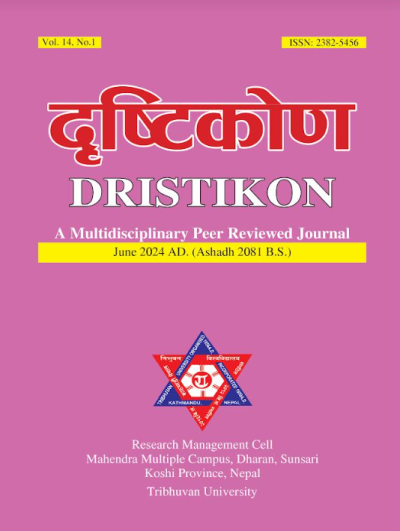Exploring Sri Kṛṣṇa Līlā and Nature's Union in the Śrimad Bhāgavata Mahāpurāṇa
DOI:
https://doi.org/10.3126/dristikon.v14i1.66003Keywords:
godhead, conservation, intertwining, līlā, scriptureAbstract
The Śrimad Bhāgavata Mahāpurāṇa explores the union of characters in the narrative, highlighting the intrinsic relationship between Sri Kṛṣṇa līlā (the divine acts of Sri Kṛṣṇa ) and the natural world as depicted in this sacred text. One of the distinctive features of the Śrimad Bhāgavata Mahāpurāṇa is the seamless integration of characters, both human and divine, with the natural world. The major objectives of this study are to explicate the characters of the Śrimad Bhāgavata Mahāpurāṇa manifesting Sri Kṛṣṇa līlā to Nature; to analyze the union of characters relating to Sri Kṛṣṇa līlā to Nature in the text; and to evaluate the union of characters in connection to Nature in the Śrimad Bhāgavata Mahāpurāṇa. The analysis of the epic is based on the theory of Baruch Spinoza on Nature. The theorist sees God in the objects of Nature. Interpretative method is the way of study in this article. The conclusion drawn from this investigation is that union of characters in the Śrimad Bhāgavata Mahāpurāṇa shows sameness between Sri Kṛṣṇa līlā and Nature. The union of characters in this scripture serves as a powerful reminder of the inseparable bond between humanity, divinity, and the exquisite tapestry of nature, inviting devotees to experience the transcendental bliss of SriKṛṣṇa lila while recognizing the sacredness of the environment that evolves.
Downloads
Downloads
Published
How to Cite
Issue
Section
License
© Research Management Cell, Mahendra Multiple Campus, Dharan

